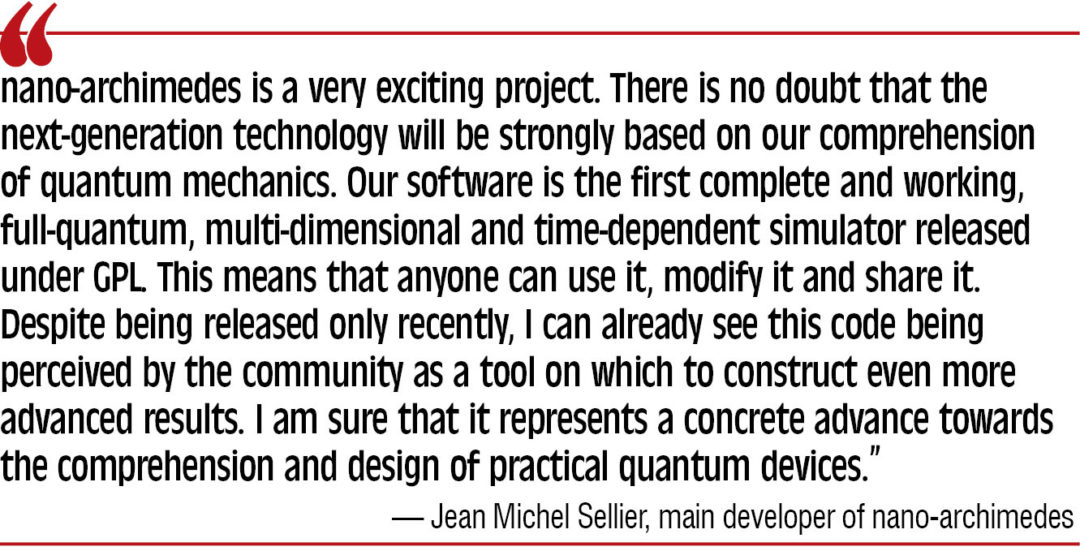The iterative Monte Carlo method—a general time-dependent approach for partial differential equations that can deal with general initial and boundary conditions—is utilised to numerically solve Wigner equation. Monte Carlo techniques scale incredibly well on parallel machines, allowing the simulation of comparatively very complex systems. We have discussed about Monte Carlo simulations in detail in March issue of EFY.
The Wigner formalism is nowadays applied to a plethora of different situations. For example, recently it has been utilised in the field of simulation of semiconductor devices, post-CMOS design and quantum chemistry (Wigner DFT and many-body techniques), among others. nano-archimedes software is based on this Wigner formalism and could be used in advanced research in these areas.
Signed particle formulation to be introduced into nano-archimedes
The latest development in nano-archimedes is based on a brand new formulation of quantum mechanics called signed particle formulation, which is currently under review. This is an important generalisation of Wigner MC method provided with a physical interpretation. In this novel formulation, a quantum system is described in terms of virtual Newtonian field-less particles that can interact with a potential by means of creation and annihilation of particles only.

Being a very intuitive approach, thus easy to implement, the signed particle formulation proves to be more convenient than other approaches in certain cases of quantum system simulations. “Even though the signed particle formulation is mathematically equivalent to other formulations, such as Schrödinger and Wigner, it has strong advantages to be intuitive, highly parallelisable and easy to extend to situations such as inelastic scattering,” says J.M. Sellier.
Download latest version of the software: click here
Boosting up scientific innovations
In the initial days of research, there are times when we do not know where to start the work. If we consider the semiconductor industry, researches around the world have been so advanced that we are now dealing in nano-scale sizes. Unfortunately, the people who are new to this field of research have to begin their work from scratch, as every work will be patented and not available freely. This will waste a lot of time, effort and money.
Providing the source codes of Archimedes and nano-archimedes as open source is a positive step in this regard, as more researchers could benefit from it and could spend their time more fruitfully. Let us hope this step from the developers will inspire other researchers to release more free scientific codes, and thereby enhance more scientific advancements in the society.
The author is an electronics enthusiast from Kerala







I run the simulation.The output is in .dat file.what i have to do generate the output in graphical format